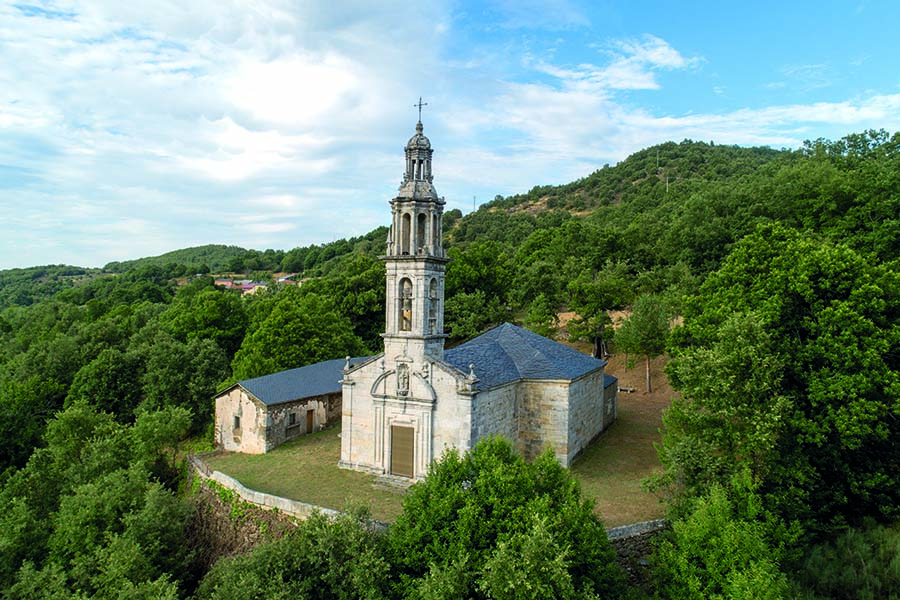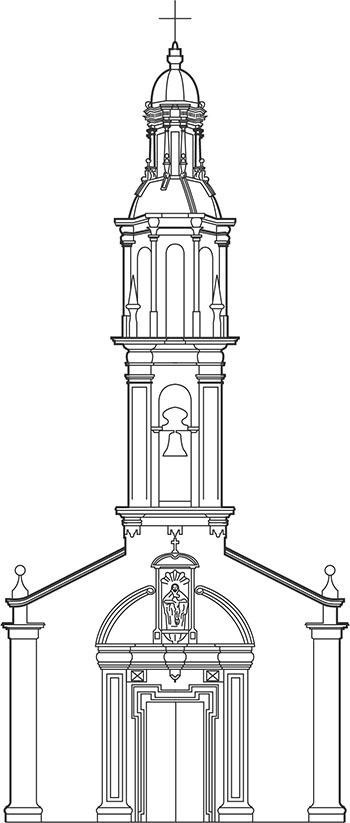
Pascual Madoz (1847) writes about the sanctuary where “there is at the foot of a hill the famous hermitage dedicated to the Eternal Father, next to which there is a house to shelter pilgrims and the poor”. From the comments of the Spanish liberal politician we deduce that the temple (890 m high), which stands on an extraordinary balcony overlooking the Bibei River (695 m) at the foot of the Alto de Quintela, was a place of pilgrimage like many are in the region.

It was no wonder that the temple especially with its spectacular tower, acted as a sound, spiritual and architectural beacon throughout the valley. In baroque style, the facade - elaborated in excellent stonework - reproduces a popular form, albeit in a stylized and academic version: access door framed with laterally extending mouldings, pilasters embedded at the sides supporting a semicircular tympanum split by a central niche it welcomes the image of the Eternal Father with his crucified son in his arms.
The tower, of vertiginous height, has a design, a stylization and a proportion that could qualify it as golden because of the extraordinary quality of its design. The bell gable is constructed in three superimposed volumes, in the image of other examples of baroque academic architecture from the XVIII century: San Salvador of Lourenzá, Sobrado dos Monxes or the Berenguela tower. In the base an area of quadrangular section that was perforated in each one of its faces to receive many bells under arched semicircular arches and flanked by pilasters of recast section.
On this square section prism an octagonal body is constituted consisting of narrow and elongated holes covered by semicircular arches and separated from each other by paired jambs with exempt shaft monolithic columns that support a jagged entablature, featuring continuous projected mouldings.
Finally, on the dome of the previous section, a cupola - similarly octagonal but smaller in size – completes the whole structure in height, replicating the composition of the lower cylinder but with greater emphasis on decoration, as if trying to replicate a jewel of a goldsmith's stone.
The pilgrimage of the Eternal Father is celebrated on the 6th of June
"... arriving in Galicia, Our Lord was amazed by the lushness of our fields, the flowery of our meadows, of the mysterious oak tree groves, of the cheerful valleys of the clear rivers and the fresh fountains, and bit by bit the Eternal Father amassed full hands on Galician soil..."
Eugenio Carré Aldao (1898)